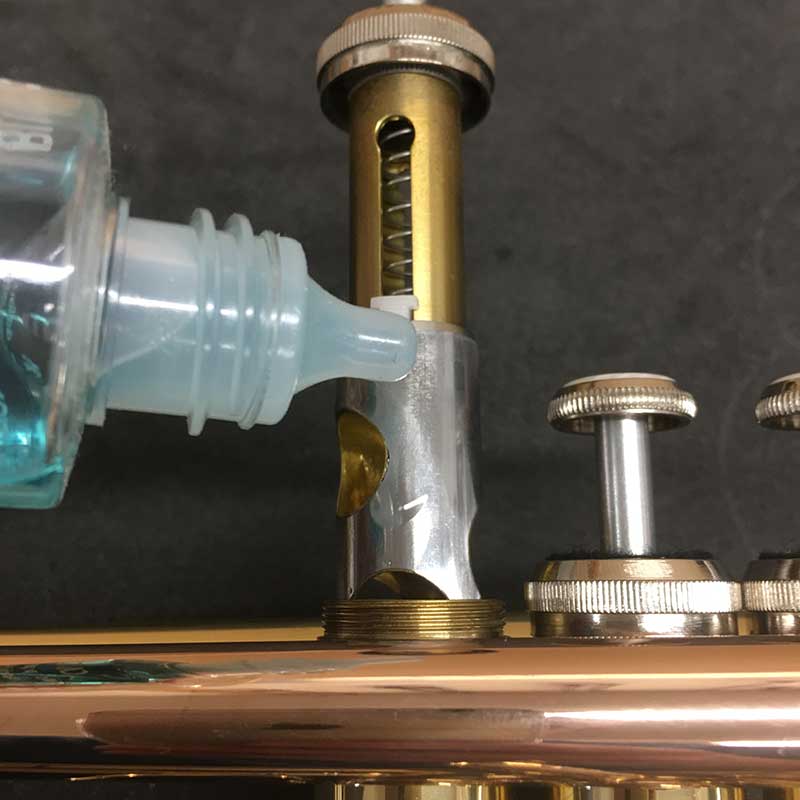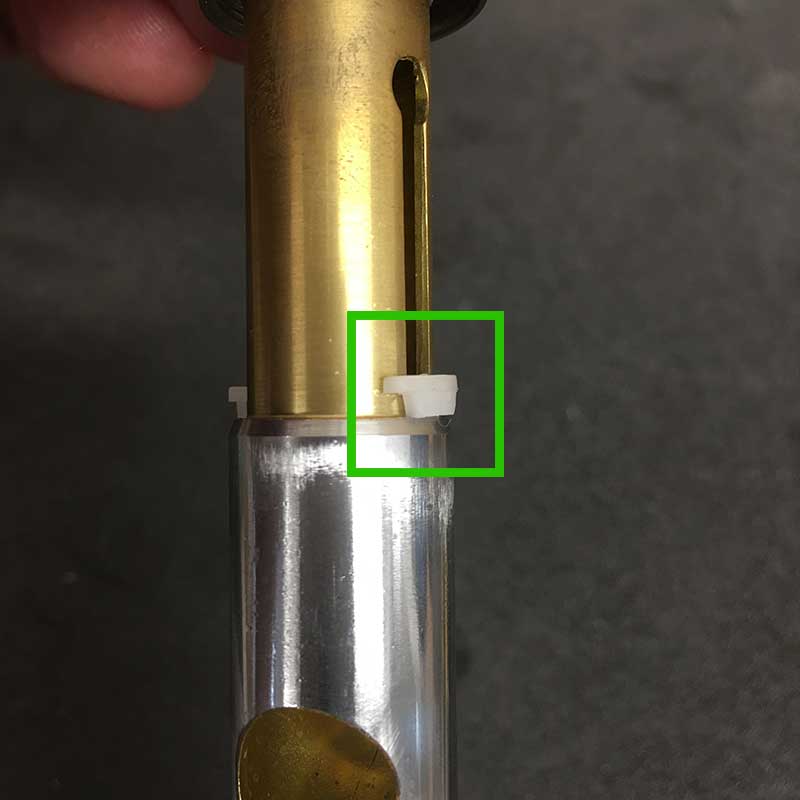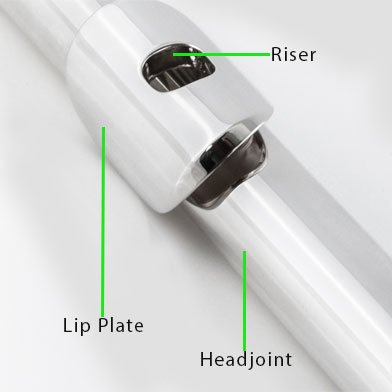One of the most frustrating learning curves with a trumpet or cornet is learning how to look after the valves and slides. The valves are the three moving “keys” on the top of the instrument.
They can become stuck and if taken out and put back wrongly they can magically enable the instrument not to play any notes at all.
This is all a little confusing and frustrating to a novice player but with trial and error and the understanding that you learn by mistakes it won’t take long to learn how the valves need to be maintained to keep them working, and how they go back in correctly if removed.
The slides enable tuning of the instrument and should all be removable. Many beginner players won’t touch the slides to start with, but it is important that you maintain them for future use. Without maintenance they too will become stuck!
Stuck Valves
The valves will become stuck or non-moveable if they are not used frequently. If you practice several times a week you probably won’t encounter any problems with the valves, but if the instrument is left for a week or so the valves may become stiffer or not move at all. This is when you will need to use valve oil to release them.
Removing & Oiling Valves - For a beginner or quick fix
When you are first starting lessons and haven’t quite got the knack of removing valves you don’t always need to remove them completely. You can unscrew them at the top and slightly lift them, squirt in a little valve oil and put them back. With a few ups and downs on the valve it should release and be perfectly playable once again.
Replacing the Valves
If the valves are lifted out they will need to be put back in exactly the right place. If they are turned at all they will come out of line - this isn't a problem at all, but you will need to put them back the correct way round. There are small plastic guides that you will see on the valves and they need to slot back in the right way round in order that the trumpet or cornet plays.

Unscrew the valve top, this will allow you to lift the valve out of the valve block.

Add a few drops of oil to the valve, you do not need much, but try to get it on the front and back.

For reference the valve has a guide to stop it from spinning in the casing.

You can see where the valve guide will sit in the block.
What oil should I use?
You should use proper trumpet/cornet valve oil, and not just any oil. It is a formula developed especially for valves and anything else may create a residue which can cause the trumpet valves to cease working.
Some oils are synthetic and some are petroleum, they should never be mixed or it will have the exact opposite effect of what you would want from oil!
Some popular valve oils

Removing the Valves Completely
If you feel that the valves need to be removed all together then please take note of the numbers stamped on the valves which indicate which hole they go back in to. You will notice that they are numbered 1, 2 and 3. Some older instruments will have dimples hammered into the top of the valve, instead of numbers.
They need to go back in the correct order and the correct way around. If they are incorrect you won’t be able to get a sound out of the instrument which can be very confusing if you are unaware!
Number 1 is closest to the mouthpiece and number 3 closest to the bell of the trumpet. You will notice the same numbers stamped on the casings of the valves. If you are taking them out all together it is good practice to remove the old valve oil by simply wiping them with a cloth.
You can then apply a fresh layer of valve oil which will give the valves the best chance of not sticking again.
You will see a small plastic bar in the valve which is a valve guide. One side will be slightly larger than the other which should guide you as to which way round the valve will be re-inserted into the casing.


Cleaning the Valves
If you remove the valves completely and they are looking a little too dirty you can simply wash them in warm water with washing up liquid. They are quite happy to have a little soak in a bath or sink. The excess dirt will just lift off. You can then rinse them, re-apply the valve oil and put them back in the trumpet or cornet.
Stuck Slides
The slides are used for tuning the trumpet or cornet and although not really used by beginners it is important that you maintain them to keep them moving. They should slide freely, and they are easy to maintain. The slides will simply pull off the trumpet and to maintain them you can remove the old grease and apply new grease. This will only need doing periodically but it is a good maintenance habit to get into. If you don’t have specific grease for the slides you can use a small amount of Vaseline.
Teachers & Learning about Maintenance
Most teachers will teach about the maintenance of brass instruments as part of the lesson and they will also do most of the maintenance for you. Musical instruments enjoy a degree of care and will give you a much better learning and playing experience if they are always kept clean and properly looked after.






